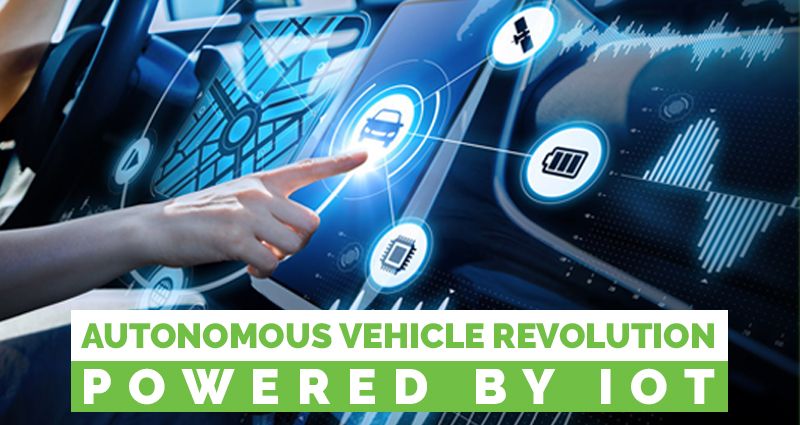Autonomous Vehicle Revolution Powered by IoT

Self-driving vehicles are the future of the transportation industry. It almost seems unbelievable that you would be able to ride vehicles without a driver on the front seat. This revolutionary change is powered by the Internet of Things (IOTs) just like all major technological developments. In the simplest terms, the IoT can be understood as the connectivity of various technological devices using the internet. The self-driving vehicle technology is powered by Artificial Intelligence algorithms.
These vehicles are tested in multiple real-life scenarios to develop a safe reaction mechanism; this whole experiment is powered by tons of data. These self-driving vehicles require a vast amount of data gathering and processing. The autonomous cars need connectivity when updating their machine learning algorithms based on user data. This is where the internet of things comes into the picture. Information related to the road like traffic congestions, location etc. are shared by driverless cars using IoT. This helps them to optimize their navigation and be safe from any impediments.
How do Self-driving Vehicles Work?
The functioning of autonomous vehicles might differ depending upon the manufacturers but the basic equipment that forms the basis of this revolutionary technology includes radar lasers, sensors, high-powered cameras that will help to picture the car’s surroundings. The IoT technology helps to deliver instructions to the car after obtaining the information from the installed equipment. It helps with a range of things including mapping the path, steering, braking, acceleration, etc.
The cars are also equipped with obstacle avoidance features that help to tackle and dodge the impediments. The use of predictive modelling is crucial in obeying traffic rules and avoids any major obstacles. There are various types of automated vehicles being developed that have a varying degree of automation. They are categorised in different levels based on the degree of automation. Level 0 vehicles will need to complete human control.
The level 1 will have the driver’s assistance feature. Level 2 is considered as partial automation where the car can automatically accelerate brake and steer only in certain circumstances. Level 3 refers to conditional automation where the automation can help the with almost all the things including environment examination but the driver should be able to take control just in case it’s needed.
Level 4 is about high automation where the car can operate automatically on a full extent on right roads and situations. The 5th level is all about full automation without any need of human input; it can run on all road types and in all scenarios. The driverless vehicles have so much to offer for the human race, it will reduce the road accident number to almost one-thirds and also help to save time and resources.
Conclusion
The article aims to edify the reader on the functioning of autonomous vehicles and how self-driving vehicles perform. It also helps to identify the importance of IoT in this autonomous revolution.